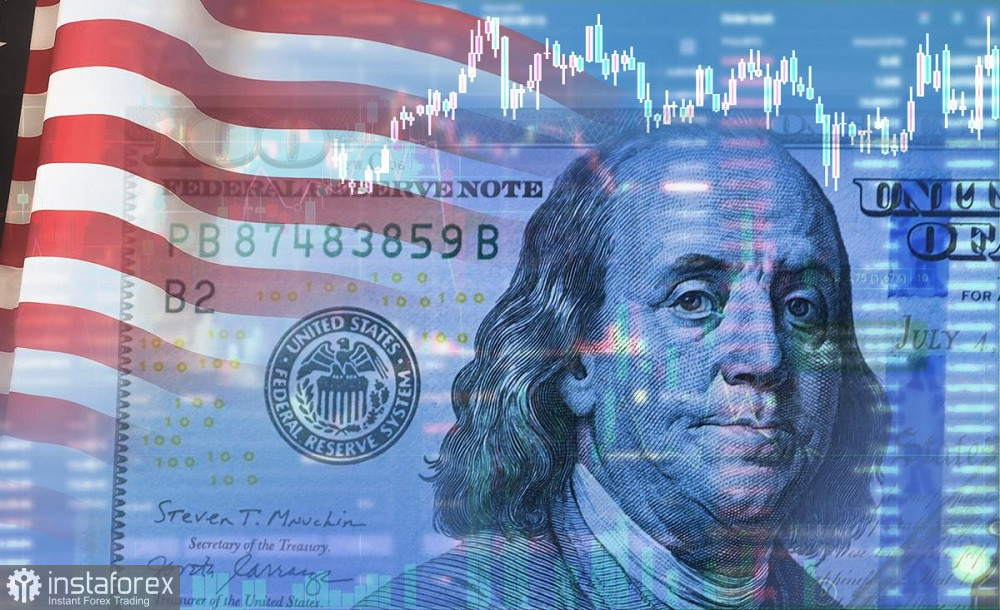The euro-dollar pair tested the 4th figure yesterday for the first time since January of this year. A multi-month price low was reached amid the overall strengthening of the greenback. It is worth noting that yesterday was marked by multi-month, and in some cases, multi-year records. In particular, the 10-year Treasury yields exceeded 4.6% for the first time since 2007, the U.S. Dollar Index rose to its highest level since November 2022 (106.53), Brent crude oil increased to $96.4 per barrel (the highest value since November of the previous year), and WTI crude oil rose above $95 for the first time since August 2022.

Today, all of these instruments are showing a correction, but the overall situation remains the same. The dollar is in high demand due to the rising Treasury yields and oil prices. The risk of accelerating inflation is growing, and the "shutdown specter," which becomes more realistic with each passing day, only adds fuel to the fire, provoking an increase in risk-off sentiment in the markets.
Is a shutdown inevitable?
Yes, let's start with the "news from Capitol Hill." Judging by recent events, America is confidently heading towards a shutdown, which will begin on the night of October 1st. That is unless the Congress approve a temporary budget to prevent the shutdown of federal government operations. The main barrier here is the lower house of Congress. The Senate recently approved a bill to extend government funding until November 17, after which it was sent to the House of Representatives. However, House Speaker Kevin McCarthy announced yesterday that there would not be enough votes among House members to support this budget proposal. Instead of the Senate's project, McCarthy will bring another bill to a vote, proposed by Republicans, which includes additional funding for border security. This is a knowingly failed bill because it will not be supported by many Democrats in both houses of Congress.
In other words, the situation has effectively reached an impasse. The midterm elections in Congress, held last fall, essentially laid the groundwork for this slow-motion crisis. Almost a year later, it has "detonated." While the Senate still demonstrates the ability to compromise, the House of Representatives has what is known as the "far-right wing," whose members align with Trump's politics and are willing to initiate a shutdown to achieve certain political goals. U.S. President Joe Biden admitted yesterday that he does not know how to prevent the shutdown of the American government, but also expressed disagreement with the idea that a shutdown is inevitable.
However, judging by the market's reaction, traders have a somewhat different opinion—everyone is preparing for the worst-case scenario.
Oil Market and Treasury yields
As mentioned earlier, Brent and WTI both set multi-month records yesterday. The overall reason for the rise in the oil market is known: Saudi Arabia and Russia, members of OPEC+, have reduced production by 1.3 million barrels per day until the end of the year. However, yesterday's price surge was directly linked to American data. It became known that U.S. oil inventories decreased by 2.2 million barrels last week (to 416.3 million barrels). This is the lowest level since December 2nd of last year and 4% below the five-year average.
According to most experts, in the short-term (and possibly medium-term) perspective, oil prices will continue to rise. The OPEC+ meeting scheduled for October 4th is unlikely to resolve the current situation: Saudi Arabia is more likely to agree to much higher prices, but not significantly lower ones. Given this disposition, it's only a matter of time before Brent surpasses the psychologically significant level of $100 per barrel.
Obviously, the rising oil price can keep inflation in the U.S. at a high level for longer, forcing the Federal Reserve to react to the situation. This is another factor supporting the greenback. Against the backdrop of rising hawkish expectations, the yield on U.S. government bonds is also increasing. In particular, the 10-year Treasury yields exceeded 4.6% yesterday, the first time since fall of 2007.
Conclusions
The fundamental background for the EUR/USD pair continues to favor a downward trend. The growth of risk-off sentiment (due to a possible shutdown), the rising cost of "black gold," and increasing Treasury yields—all these factors are in favor of the greenback. The European currency has nothing to counter the dollar's dominance.
Thanks to the combination of these fundamental factors, sellers tested the support level of 1.0500 (the lower Bollinger Bands line on the D1 timeframe). Although they couldn't firmly establish themselves around the 4th figure, bearish sentiment will continue to exert pressure on the pair. Therefore, it is advisable to use corrective price pullbacks to open short positions, with the primary target being 1.0500.
 English
English 
 Русский
Русский Bahasa Indonesia
Bahasa Indonesia Bahasa Malay
Bahasa Malay ไทย
ไทย Español
Español Deutsch
Deutsch Български
Български Français
Français Tiếng Việt
Tiếng Việt 中文
中文 বাংলা
বাংলা हिन्दी
हिन्दी Čeština
Čeština Українська
Українська Română
Română

